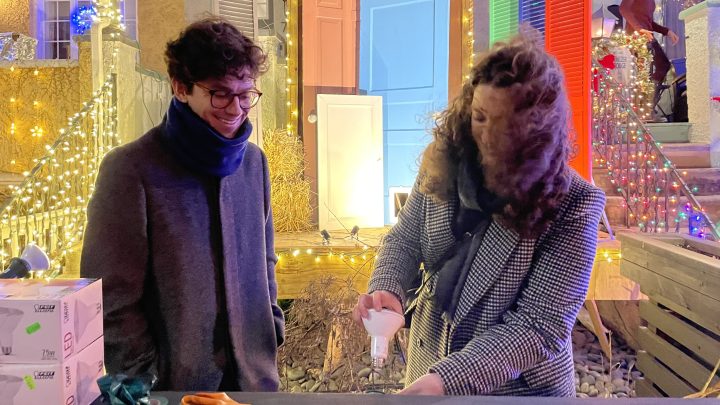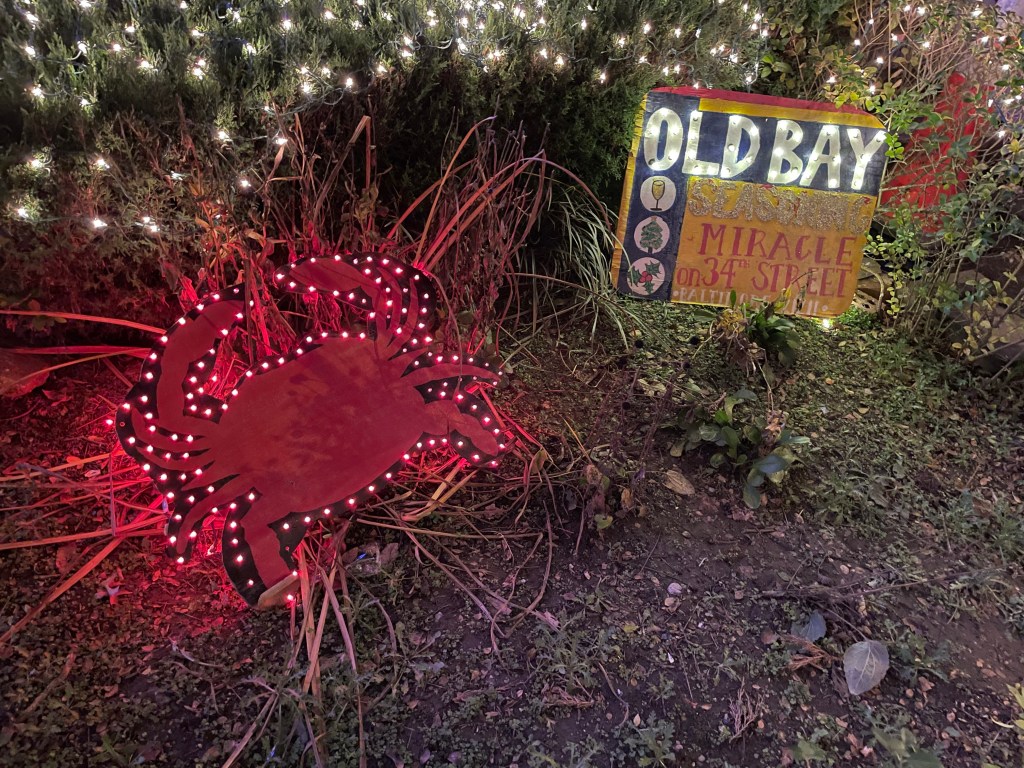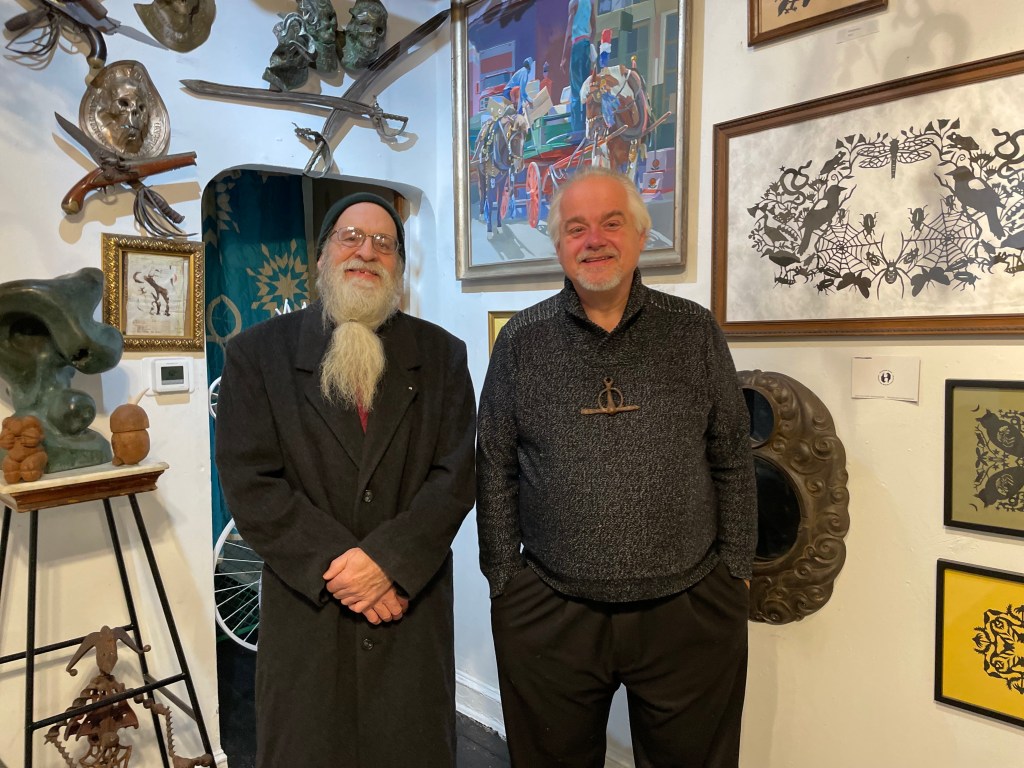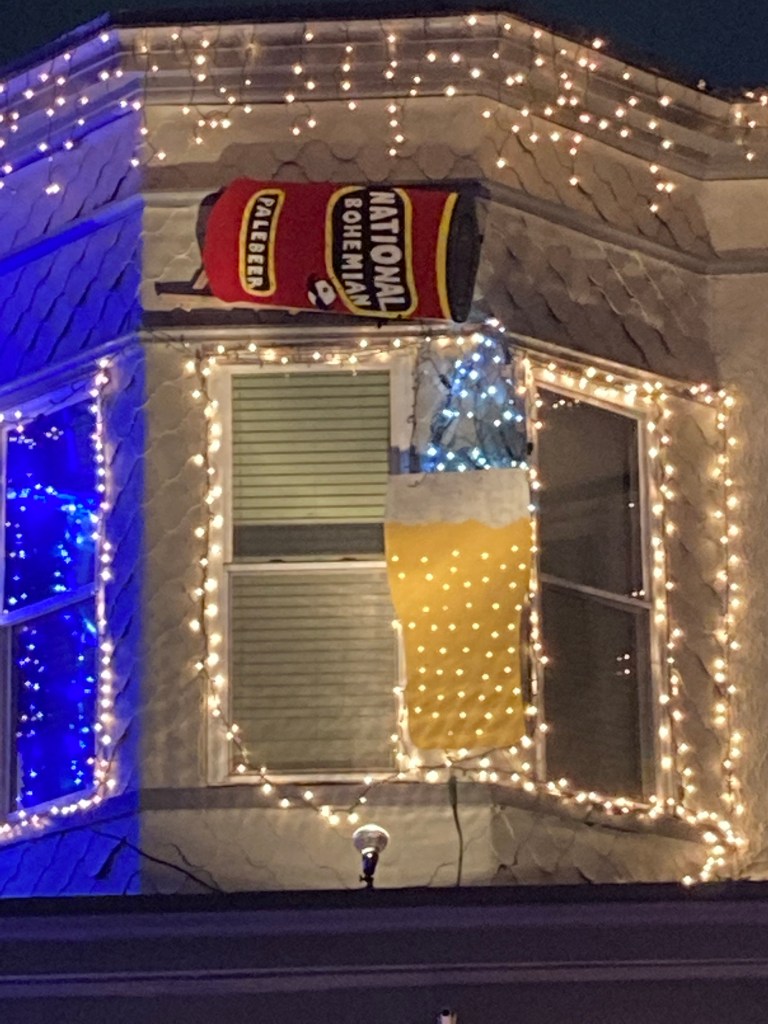
What it means to buy a house on a block that loves Christmas
What it means to buy a house on a block that loves Christmas

There’s that block in every city. The one where every last inch is covered in lights. In Baltimore, that block happens to be on 34th Street. In fact, residents refer to it as the “miracle on 34th Street.”
This year, at least three of the couple of dozen homes on the block have gone on the market and found buyers. Sometimes the listings highlight the holiday lights tradition; other times, potential buyers hear by word of mouth. All have to take into account what it means to buy not just a dwelling, but a whole new way of life for the month of December.
It includes lots of sightseers. By 5:30 p.m. one recent day, hundreds of visitors were already wandering down the block. Strings of lights were draped from one side of the street to the other, creating a kind of glowing canopy overhead. The houses were decorated in traditional holiday lights, with a dash of Baltimore weird.
One house had a light-up can of Old Bay seasoning, while another paid tribute to a local beer, National Bohemian. There was also a very pink display filled with a Baltimore standard: pink flamingos, immortalized by film director John Waters, a local character.

The display in front of Joey Zeledon and Martelle Esposito’s house sometimes requires explanation. It’s an abstraction of the Nativity scene, where all the classic figures are represented by free-standing doors on a platform. Three closet doors are the three wise men. As for the main players: Jesus is a small, white cabinet door, Joseph is a larger, brown one and the Mary door is painted blue, with a small opening at the bottom that used to be a cat door.
“Most people get a chuckle out of it. It’s kind of unexpected,” Zeledon said. “It’s a nice balance of reverent and irreverent,” added Esposito.

This block is in Hampden, a neighborhood that’s a mix of longtime working-class residents, several generations of hipster artists and first-time buyers who want to be in the middle of it all. The light tradition was started back in 1990 by longtime resident Bob Hosier.
“The guy across the street could not hear my Christmas music, and he asked me if I would run a speaker over to his house from mine — which I did, and I put lights through it so it didn’t look too cheesy,” Hosier said.
Other neighbors asked him to string lights over their homes too, Hosier added. “And here’s where we are.”

The townhomes on this block — called rowhouses in Baltimore — were built mostly in the late 1800s. In recent years, they’ve sold for between $200,000 and $400,000. That’s on par with other homes in the ZIP code, according to James Lamb, a real estate agent with Berkshire Hathaway who works in the area. He called the lights a net positive for the neighborhood.
“People come from all over to enjoy the displays, and frequently they patronize restaurants and other small businesses in the area,” Lamb said.
There’s no formal obligation to put up lights, though people who buy on the block tend to want to. That includes Lamb’s client, Cliff Torrence, who moved from Nashville, Tennessee, last month.
“I love doing stuff like this. I love putting on a show and entertaining and making people happy,” Torrence said.
The listing for Torrence’s house led with the fact that it was on the block with the lights, so he knew what he was getting into. He’s spent $500 on twinkle lights so far and doesn’t know what his December electric bill will be. But he’s willing to spend twice that.
“Let’s just put a comma in there: $1,000,” Torrence said.
Older residents of the block say their bills don’t come close to requiring that kind of punctuation, especially when using LED lights.
Still, not everyone wants that kind of commitment. Rex and Lauren Anderson live a few streets over. They’ve brought their family to see the lights but aren’t interested in owning a home on this block.
“It’s all too much responsibility. I feel like this is a bit much. We’ve got about three strings of lights. I don’t think we could hang here,” said Rex Anderson.
Along with a willingness to put up lights, residents need to be open to an audience. Artist Jim Pollock moved here in 1989 and actually invites visitors into his front room on December evenings to look at artwork.

“We have eight artists in here this evening,” Pollock said as he welcomed people in. “Four men and four women.”
Pollock stood next to one of them, his friend Geoffrey Harris, whose wire-metal sculptures were on display. His gray beard is so long that it was gathered in a scrunchie, making him look a little like a hippie version of Santa. Kids sometimes will ask him about that.
“I’ll say, ‘Well, you never know,’” Harris said.
In the front yard is a giant Christmas tree composed of hubcaps, made by Pollock, who likes to create art out of old junk. He’ll sell the occasional sculpture when people visit, though he said people mostly buy the angels he makes out of old National Bohemian beer cans.
Those are just $10, which means visitors who miss out on buying a home (one that went up for sale about a month ago is now under contract) can at least take some of the miracle on 34th Street spirit away with them.

There’s a lot happening in the world. Through it all, Marketplace is here for you.
You rely on Marketplace to break down the world’s events and tell you how it affects you in a fact-based, approachable way. We rely on your financial support to keep making that possible.
Your donation today powers the independent journalism that you rely on. For just $5/month, you can help sustain Marketplace so we can keep reporting on the things that matter to you.

















